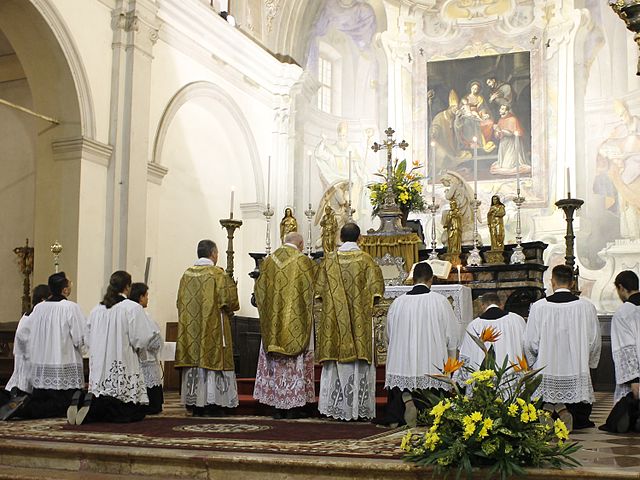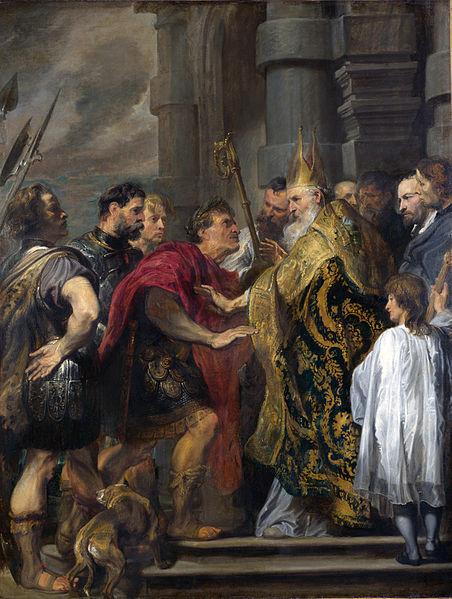The Ambrosian Rite is a Latin liturgical rite of the Catholic Church. The rite is named after Saint Ambrose, a bishop of Milan in the fourth century. It is used by around five million Catholics in the greater part of the Archdiocese of Milan, in some parishes of the Diocese of Como, Bergamo, Novara, Lodi, and in the Diocese of Lugano, Canton of Ticino, Switzerland.
A solemn Mass celebrated in the Ambrosian Rite in the church of its patron, Saint Ambrose, Legnano
An Ambrosian Rite Mass being celebrated in the Church of the Nativity of the Blessed Virgin Mary, Legnano
Ambrose of Milan, venerated as Saint Ambrose, was a theologian and statesman who served as Bishop of Milan from 374 to 397. He expressed himself prominently as a public figure, fiercely promoting Roman Christianity against Arianism and paganism. He left a substantial collection of writings, of which the best known include the ethical commentary De officiis ministrorum (377–391), and the exegetical Exameron (386–390). His preachings, his actions and his literary works, in addition to his innovative musical hymnography, made him one of the most influential ecclesiastical figures of the 4th century.
Detail from possibly contemporary mosaic (c. 380–500) of Ambrose in the Basilica of Sant'Ambrogio
Relief by Vuolvino [it] depicting Ambrose as a child while bees swarm his crib. His father is on the right of the image while the sky has three clouds "sending forth flames". The relief is from the Altar of Sant'Ambrogio in the Basilica of Sant'Ambrogio.
Saint Ambrose barring Theodosius from Milan Cathedral a "pious fiction" painted in 1619 by Anthony van Dyck. National Gallery, London
Embossed silver urn with the body of Ambrose (with white vestments) in the crypt of Sant'Ambrose, with the skeletons of Gervase and Protase




![Relief by Vuolvino [it] depicting Ambrose as a child while bees swarm his crib. His father is on the right of the image while the sky has three clouds](https://upload.wikimedia.org/wikipedia/commons/thumb/e/e7/Altare_di_s._ambrogio%2C_824-859_ca.%2C_retro_di_vuolvino%2C_storie_di_sant%27ambrogio_06_miracolo_delle_api.jpg/640px-Altare_di_s._ambrogio%2C_824-859_ca.%2C_retro_di_vuolvino%2C_storie_di_sant%27ambrogio_06_miracolo_delle_api.jpg)

